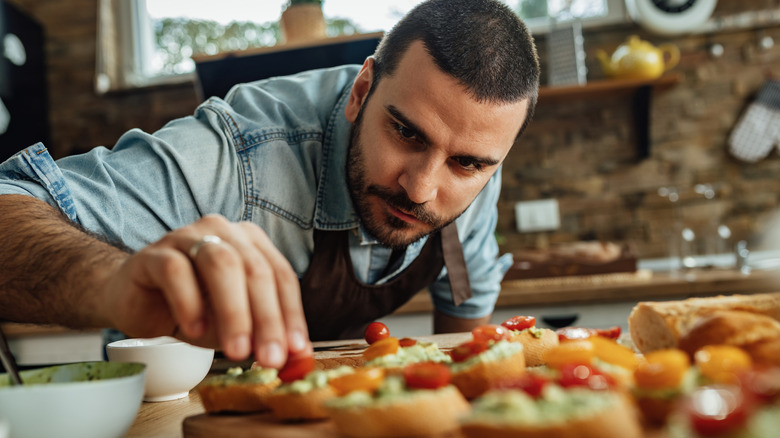Pop Up Restaurants Explained
The restaurant industry is a notoriously difficult career path, strife with long hours and hard work, whether you work in the kitchen or in front of the house. The industry has a 60% failure rate within the first year, escalating to 80% by year five, and that's before the pandemic is factored in, per CNBC. In 2020 restaurants faced mandatory closings, accounting for a loss of $280 billion in sales, followed by labor shortages, supply chain issues, and inflation, factors that still affect the industry today. In spring 2021, the National Restaurant Association estimated 90,000 restaurants, from mom-and-pops to franchises, remained closed, permanently or temporarily, due to the pandemic. A smaller number than initially feared by experts like Tom Colicchio, who estimated a staggering 75% closure rate without government intervention, per The Washington Post.
While the CDC estimates over 80% of the US population is vaccinated, allowing restaurants to keep their doors open, the USDA reports food prices rose 9.5% to 10.5% in 2022 and believe inflation will increase another 3% to 4% in 2023. Restaurants that survive have learned to pivot, relying on technology, digitalization, and a happier, smaller workforce due to hourly labor costs rising 8.6% in 2021, per Forbes.
To keep costs down or to try out a new menu, some restauranteurs have looked to a trendy new concept called 'pop-up restaurants.' Here's what you need to know about pop-ups, whether you're a chef or just hungry, looking for a new place to eat.
The creative freedom of a pop-up
Similar to supper clubs and the food truck trend, pop-up restaurants are a trending industry concept designed to limit the high costs associated with running a restaurant. Pop-up restaurants have lower overhead costs, including renting kitchen equipment, instead of purchasing, and lower operating expenses like labor and ingredients. Unlike a cramped, rolling restaurant on wheels, these temporary eateries can be found anywhere, including existing restaurants, on the day they are closed, private homes, and even dorm rooms. Restauranteurs can sign a short-term lease for as little as an evening up to a few months instead of a long-term commitment, per Squareup.
A pop-up restaurant can allow a seasoned or aspiring chef to test out a new menu or location and then work out any kinks in the food or design of the space before making a more significant investment in a permanent space. According to the New York Times, the intimate concept can also appeal to chefs who want to use family recipes to share their "culinary traditions" and food history, announcing to diners, "This is my history. This is who I am."
The temporary nature of the business generates buzz and excitement, often leading to high sales. More than traditional restaurants, which have more time to build a customer base, pop-ups rely heavily on a successful promotional strategy, including social media marketing. The success of a pop-up can lead to investment funding and establishing a new chef in the area and industry.

